- Home
- Robert J. Sawyer
Stream of Consciousness
Stream of Consciousness Read online
* * *
Fictionwise
www.Fictionwise.com
Copyright ©1998 by Robert J. Sawyer
First published in Packing Fraction and Other Tales of Science and Imagination, ed. Julie E. Czerneda, November 1998
* * *
NOTICE: This work is copyrighted. It is licensed only for use by the original purchaser. Making copies of this work or distributing it to any unauthorized person by any means, including without limit email, floppy disk, file transfer, paper print out, or any other method constitutes a violation of International copyright law and subjects the violator to severe fines or imprisonment.
* * *
The roar of the helicopter blades pounded in Raji's ears—he wished the university could afford a hoverjet. The land below was rugged Canadian shield. Pine trees grew where there was soil; lichen and moss covered the Precambrian rocks elsewhere. Raji wore a green parka, its hood down. He continued to scan the ground, and—
There! A path through the wilderness, six meters wide and perhaps half a kilometer long: trees knocked over, shield rocks scraped clean, and, at the end of it—
Incredible. Absolutely incredible.
A large dark-blue object, shaped like an arrowhead.
Raji pointed, and the pilot, Tina Chang, banked the copter to take it in the direction he was indicating. Raji thumbed the control for his microphone. “We've found it,” he said, shouting to be heard above the noise of the rotor. “And it's no meteorite.” As the copter got closer, Raji could see that the front of the arrowhead was smashed in. He paused, unsure what to say next. Then: “I think we're going to need the air ambulance from Sudbury.”
* * * *
Raji Sahir was an astronomer with Laurentian University. He hadn't personally seen the fireball that streaked across the Ontario sky last night, flanked by northern lights, but calls about it had flooded the university. He'd hoped to recover a meteorite intact; meteors were a particular interest of his, which is why he'd come to Sudbury from Vancouver twenty years ago, in 1999. Sudbury was situated on top of an ancient iron-nickel meteorite; the city's economy had traditionally been based on mining this extraterrestrial metal.
The helicopter set down next to the dark-blue arrowhead. There could be no doubt: it was a spaceship, with its hull streamlined for reentry. On its port side were white markings that must have been lettering, but they were rendered in an alphabet of triangular characters unlike anything Raji had ever seen before.
Raji was cross-appointed to the biology department; he taught a class called “Life on Other Worlds,” which until this moment had been completely theoretical. He and Tina clambered out of the copter, and they moved over to the landing craft. Raji had a Geiger counter with him; he'd expected to use it on a meteorite, but he waved it over the ship's hull as he walked around it. The clicks were infrequent; nothing more than normal background radiation.
When he got to the pointed bow of the lander, Raji gasped. The damage was even more severe than it looked from above. The ship's nose was caved in and crumpled, and a large, jagged fissure was cut deep into the hull. If whatever lifeforms were inside didn't already breathe Earthlike air, they were doubtless dead. And, of course, if the ship carried germs dangerous to life on Earth, well, they were already free and in the air, too. Raji found himself holding his breath, and—
“Professor!”
It was Tina's voice. Raji hurried over to her. She was pointing at a rectangular indentation in the hull, set back about two centimeters. In its center was a circular handle.
A door.
“Should we go inside?” asked Tina.
Raji looked up at the sky. Still no sign of the air ambulance. He thought for a moment, then nodded: “First, though, please get the camcorder from the helicopter.”
The woman nodded, hustled off to the chopper, and returned a moment later. She turned on the camera, and Raji leaned in to examine the door's handle. It was round, about twenty centimeters across. A raised bar with fluted edges crossed its equator. Raji thought perhaps the fluting was designed to allow fingers to grip it—but, if so, it had been built for a six-fingered hand.
He grasped the bar, and began to rotate it. After he'd turned it through 180 degrees, there was a sound like four gunshots. Raji's heart jumped in his chest, but it must have been restraining bolts popping aside; the door panel—shorter and wider than a human door—was suddenly free, and falling forward toward Raji. Tina surged in to help Raji lift it aside and set it on the ground. The circular handle was likely an emergency way of opening the panel. Normally, it probably slid aside into the ship's hull; Raji could see a gap on the right side of the opening that looked like it would have accommodated the door.
Raji and Tina stepped inside. Although the outer hull was opaque, the inner hull seemed transparent—Raji could see the gray-blue sky vaulting overhead. Doubtless there were all kinds of equipment in between the outer and inner hulls, so the image was perhaps conveyed inside via bundles of fibre optics, mapping points on the exterior to points on the interior. There was plenty of light; Raji and Tina followed the short corridor from the door into the ship's main habitat, where—
Tina gasped.
Raji felt his eyes go wide.
There was an alien being, dead or unconscious, slumped over in a bowl-shaped chair in the bow of the ship. The fissure Raji had seen outside came right through here as a wide gap in the hull; a cool breeze was blowing in from outside.
Raji rushed over to the strange creature. There was, at once, no doubt in his mind that this creature had come from another world. It was clearly a vertebrate—it had rigid limbs, covered over with a flexible greenish-gray hide. But every vertebrate on Earth had evolved from the same basic body plan, an ancestral creature with sensory organs clustered around the head, and four limbs. Oh, there were creatures that had subsequently dispensed with some or all of the limbs, but there were no terrestrial vertebrates with more than four.
But this creature had six limbs, in three pairs. Raji immediately thought of the ones at the top of the tubular torso as arms, and the much thicker ones at the bottom as legs. But he wasn't sure what the ones in the middle, protruding halfway between hips and shoulders, should be called. They were long enough that if the creature bent over, they could serve as additional legs, but they ended in digits complex and supple enough that it seemed they could also be used as hands.
Raji counted the digits—there were indeed six at the end of each limb. Earth's ancestral vertebrate had five digits, not six, and no Earthly animal had ever evolved with more than five. The alien's digits were arranged as four fingers flanked on either side by an opposable thumb.
The alien also had a head protruding above the shoulders—at least that much anatomy it shared with terrestrial forms. But the head seemed ridiculously small for an intelligent creature. Overall, the alien had about the same bulk as Raji himself did, but its head was only the size of a grapefruit. There were two things that might have been eyes covered over by lids that closed from either side, instead of from the top and bottom. There were two ears, as well, but they were located on top of the head, and were triangular in shape, like the ears of a fox.
The head had been badly banged up. Although the alien was strapped into its seat, a large hunk of hull material had apparently hit it, cutting into one side of its head; the debris that had likely done the damage was now lying on the floor behind the being's chair. Interestingly, though, the head wound showed no signs of bleeding: the edges of it were jagged but dry.
At first Raji could see nothing that might be a mouth, but then he looked more closely at the middle limbs. In the center of each circular palm was a large opening—perhaps food was drawn in through these. In place of
peristalsis, perhaps the creature flexed its arms to move its meals down into the torso.
Assuming, of course, that the alien was still alive. So far, it hadn't moved or reacted to the presence of the two humans in any way.
Raji placed his hand over one of the medial palms, to see if he could detect breath being expelled. Nothing. If the creature still breathed, it wasn't through its mouths. Still, the creature's flesh was warmer than the surrounding air—meaning it was probably warm blooded, and, if dead, hadn't been dead very long.
A thought occurred to Raji. If the breathing orifices weren't on the middle hands, maybe they were on the upper hands. He looked at one of the upper hands, spreading the semi-clenched fingers. The fingers seemed to be jointed in many more places than human fingers were.
Once he'd spread the fingers, he could see that there were holes about a centimeter in diameter in the center of each palm. Air was indeed alternately being drawn in and expelled through these—Raji could feel that with his own hand.
“It's alive,” he said excitedly. As he looked up, he saw the air ambulance hoverjet through the transparent hull, coming in for a landing.
* * * *
The ambulance attendants were a white man named Bancroft and a Native Canadian woman named Cardinal. Raji met them at the entrance to the downed ship.
Bancroft looked absolutely stunned. “Is this—is this what I think it is?”
Raji was grinning from ear to ear. “It is indeed.”
“Who's injured?” asked Cardinal.
“The alien pilot,” said Raji.
Bancroft's jaw dropped, but Cardinal grinned. “Sounds fascinating.” She hustled over to the hoverjet and got a medical kit.
The three of them went inside. Raji led them to the alien; Tina had remained with it. She had the palm of her hand held about five centimeters in front of one of the alien's breathing holes. “Its respiration is quite irregular,” she said, “and it's getting more shallow.”
Raji looked anxiously at the two ambulance attendants.
“We could give it oxygen...” suggested Bancroft tentatively.
Raji considered. Oxygen only accounted for 21% of Earth's atmosphere. Nitrogen, which makes up 78%, was almost inert—it was highly unlikely that N2was the gas the alien required. Then again, plants took in carbon dioxide and gave off oxygen—perhaps giving it oxygen would be a mistake.
No, thought Raji. No energetic life forms had ever appeared on Earth that breathed carbon dioxide; oxygen was simply a much better gas for animal physiology. It seemed a safe bet that if the alien were indeed gasping, it was O2that it was gasping for. He motioned for the ambulance attendants to proceed.
Cardinal got a cylinder of oxygen, and Bancroft moved in to stand near the alien. He held the face mask over one of the alien's palms, and Cardinal opened the valve on the tank.
Raji had been afraid the creature's palm orifices would start spasming, as if coughing at poisonous gas, but they continued to open and close rhythmically. The oxygen, at least, didn't seem to be hurting the being.
“Do you suppose it's cold?” asked Tina.
The creature had naked skin. Raji nodded, and Tina hustled off to get a blanket from her helicopter.
Raji bent over the creature's small head and gently pried one of its pairs of eyelids apart at their vertical join. The eye was yellow-gold, shot through with reddish orange veins. It was a relief seeing those—the red color implied that the blood did indeed transport oxygen using hemoglobin, or a similar iron-containing pigment.
In the center of the yellow eye was a square pupil. But the pupil didn't contract at all in response to being exposed to light. Either the eye worked differently—and the square pupil certainly suggested it might—or the alien was very deeply unconscious.
“Is it safe to move it?” asked Cardinal.
Raji considered. “I don't know—the head wound worries me. If it's got anything like a human spinal cord, it might end up paralyzed if we moved it improperly.” He paused. “What sort of scanning equipment have you got?”
Cardinal opened her medical kit. Inside was a device that looked like a flashlight with a large LCD screen mounted at the end opposite the lens. “Standard class-three Deepseer,” she said.
“Let's give it a try,” said Raji.
Cardinal ran the scanner over the body. Raji stood next to her, looking over her shoulder. The woman pointed to the image. “That dark stuff is bone—or, at least, something as dense as bone,” she said. “The skeleton is very complex. We've got around 200 bones, but this thing must have twice that number. And see that? The material where the bones join is darker—meaning it's denser—than the actual bones; I bet these beasties never get arthritis.”
“What about organs?”
Cardinal touched a control on her device, and then waved the scanner some more. “That's probably one there. See the outline? And—wait a sec. Yup, see there's another one over here, on the other side that's a mirror image of the first one. Bilateral symmetry.”
Raji nodded.
“All of the organs seem to be paired,” said Cardinal, as she continued to move the scanner over the body. “That's better than what we've got, of course, assuming they can get by with just one in a pinch. See that one there, inflating and deflating? That must be one of the lungs—you can see the tube that leads up the arm to the breathing hole.”
“If all the organs are paired,” asked Raji, “does it have two hearts?”
Cardinal frowned, and continued to scan. “I don't see anything that looks like a heart,” she said. “Nothing that's pumping or beating, or...”
Raji quickly checked the respiratory hole that wasn't covered by the oxygen mask. “It is still breathing,” he said, with relief. “Its blood must be circulating somehow.”
“Maybe it doesn't have any blood,” said Bancroft, pointing at the dry head wound.
“No,” said Raji. “I looked at its eyes. I could see blood vessels on their surface—and if you've got blood, you've got to make it circulate somehow; otherwise, how do you get the oxygen taken in by the lungs to the various parts of the body?”
“Maybe we should take a blood sample,” said Bancroft. “Cardy's scanner can magnify it.”
“All right,” said Raji.
Bancroft got a syringe out of the medical kit. He felt the alien's hide, and soon found what looked like a distended blood vessel. He pushed the needle in, and pulled the plunger back. The glass cylinder filled with a liquid more orange than red. He then moved the syringe over to the scanner, and put a drop of the alien blood into a testing compartment.
Cardinal operated the scanner controls. An image of alien blood cells appeared on her LCD screen.
“Goodness,” she said.
“Incredible,” said Raji.
Tina jockeyed for position so that she, too, could see the display. “What?” she said. “What is it?”
“Well, the blood cells are much more elaborate than human blood cells. Our red cells don't even have nuclei, but these ones clearly do—see the dark, peanut-shaped spot there? But they also have cilia—see those hair-like extensions?”
“And that means?” asked Tina.
“It means the blood cells are self-propelled,” said Cardinal. “They swim in the blood vessels, instead of being carried along by the current; that's why the creature has no heart. And look at all the different shapes and sizes—there's much more variety here than what's found in our blood.”
“Can you analyze the chemical makeup of the blood?” asked Raji.
Cardinal pushed some buttons on the side of her scanner. The LCD changed to an alphanumeric readout.
“Well,” said Cardinal, “just like our blood, the major constituent of the alien's plasma is water. It's a lot saltier than our plasma, though.”
“Human blood plasma is a very close match for the chemical composition of Earth's oceans,” said Raji to Tina. “Our component cells are still basically aquatic lifeforms—it's just that we carry a miniature oc
ean around inside us. The alien must come from a world with more salt in its seas.”
“There are lots of protein molecules,” said Cardinal, “although they're using some amino acids that we don't. And—my goodness, that's a complex molecule.”
“What?”
“That one there,” she said, pointing to a chemical formula being displayed on her scanner's screen. “It looks like—incredible.”
“What?” asked Tina, sounding rather frustrated at being the only one with no medical or biological training.
“It's a neurotransmitter,” said Raji. “At least, I think it is, judging by its structure. Neurotransmitters are the chemicals that transmit nerve impulses.”
“There's lots of it in the blood,” said Cardinal, pointing at a figure.
“Can you show me some blood while it's still in the body?” asked Raji.
Cardinal nodded. She pulled a very fine fibre optic out of the side of her scanner, and inserted it into the same distended blood vessel Bancroft had extracted the sample from earlier.
On the scanner's screen, blood cells could be seen moving along in unison.
“They're all going the same way,” said Raji. “Even without a heart to pump them along, they're all traveling in the same direction.”
“Maybe that's why there are neurotransmitters in the bloodstream,” said Bancroft. “The blood cells communicate using them, so that they can move in unison.”
“What about the head injury?” asked Tina. “If it's got all that blood, why isn't it bleeding?”
Cardinal moved the scanner up to the alien's small, spherical head. The eyes were still closed. On the LCD screen, the skull was visible beneath the skin, and, beneath the skull, the scanner outlined the organ that was presumably the brain within.
“It's so tiny,” said Raji.
Bancroft indicated the spaceship around them. “Well, despite that, it's obviously very advanced intellectually.”
“Let's have a look at the wound,” said Raji.
Cardinal repositioned the scanner.

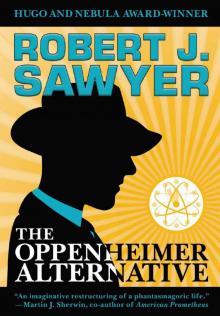 The Oppenheimer Alternative
The Oppenheimer Alternative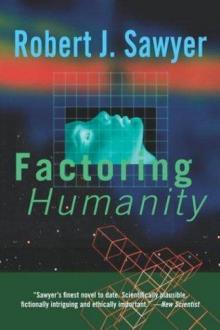 Factoring Humanity
Factoring Humanity The Shoulders of Giants
The Shoulders of Giants Stream of Consciousness
Stream of Consciousness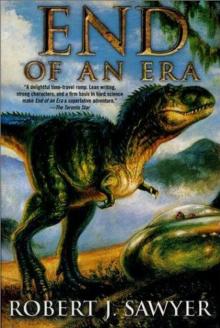 End of an Era
End of an Era The Terminal Experiment
The Terminal Experiment Far-Seer
Far-Seer Mindscan
Mindscan You See But You Do Not Observe
You See But You Do Not Observe Star Light, Star Bright
Star Light, Star Bright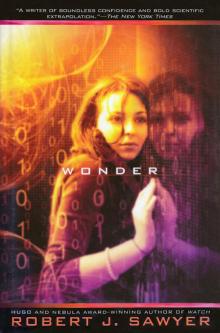 Wonder
Wonder Wiping Out
Wiping Out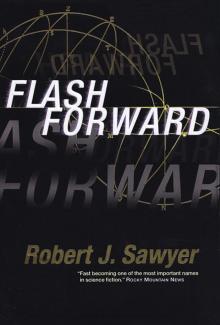 Flashforward
Flashforward Above It All
Above It All Frameshift
Frameshift The Neanderthal Parallax, Book One - Hominids
The Neanderthal Parallax, Book One - Hominids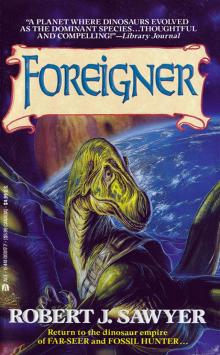 Foreigner
Foreigner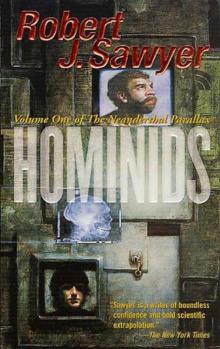 Neanderthal Parallax 1 - Hominids
Neanderthal Parallax 1 - Hominids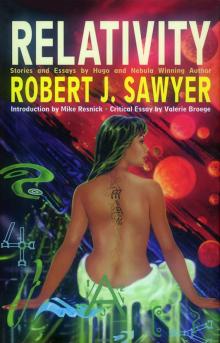 Relativity
Relativity Identity Theft
Identity Theft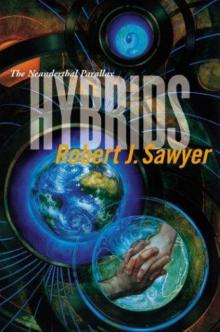 Hybrids np-3
Hybrids np-3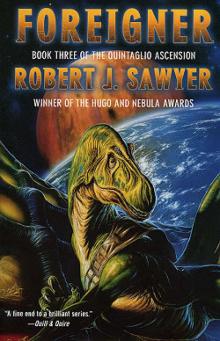 Foreigner qa-3
Foreigner qa-3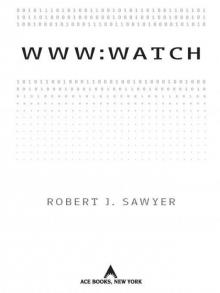 WWW: Watch
WWW: Watch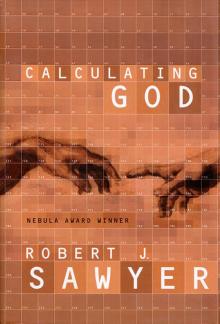 Calculating God
Calculating God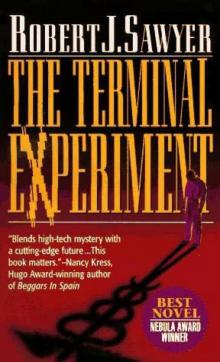 The Terminal Experiment (v5)
The Terminal Experiment (v5) Peking Man
Peking Man The Hand You're Dealt
The Hand You're Dealt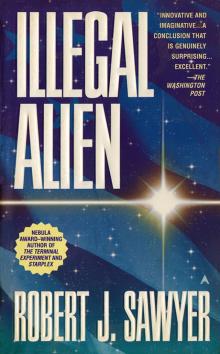 Illegal Alien
Illegal Alien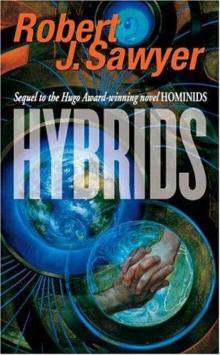 Neanderthal Parallax 3 - Hybrids
Neanderthal Parallax 3 - Hybrids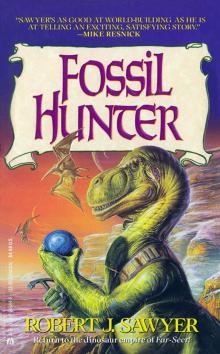 Fossil Hunter
Fossil Hunter WWW: Wonder
WWW: Wonder Iterations
Iterations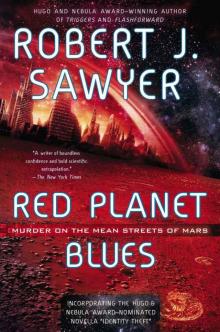 Red Planet Blues
Red Planet Blues Rollback
Rollback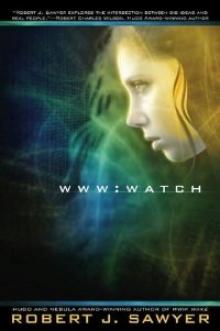 Watch w-2
Watch w-2 Gator
Gator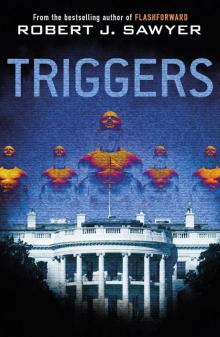 Triggers
Triggers Neanderthal Parallax 2 - Humans
Neanderthal Parallax 2 - Humans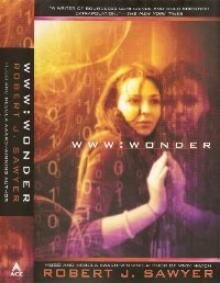 Wonder w-3
Wonder w-3 Wake
Wake Just Like Old Times
Just Like Old Times Wake w-1
Wake w-1 Fallen Angel
Fallen Angel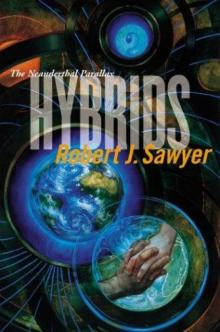 Hybrids
Hybrids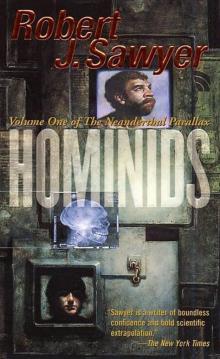 Hominids tnp-1
Hominids tnp-1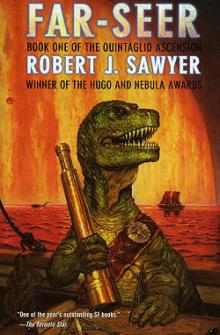 Far-Seer qa-1
Far-Seer qa-1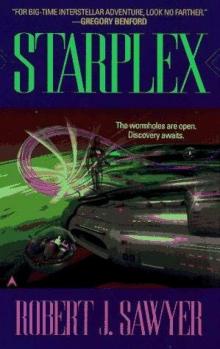 Starplex
Starplex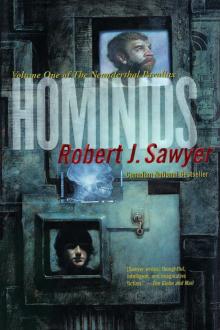 Hominids
Hominids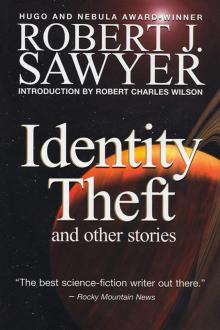 Identity Theft and Other Stories
Identity Theft and Other Stories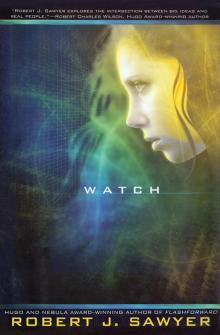 Watch
Watch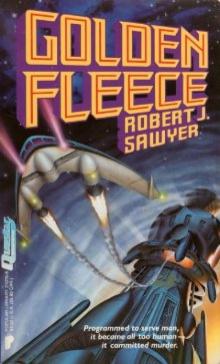 Golden Fleece
Golden Fleece Quantum Night
Quantum Night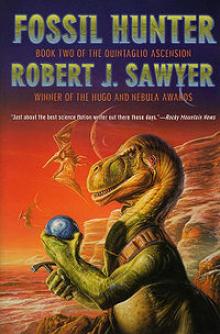 Fossil Hunter qa-2
Fossil Hunter qa-2 Humans np-2
Humans np-2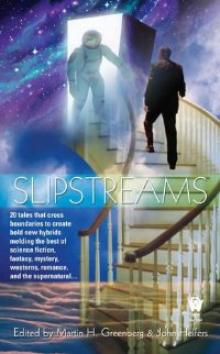 Biding Time
Biding Time